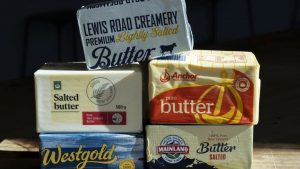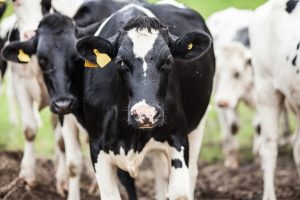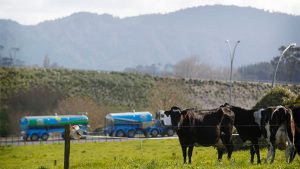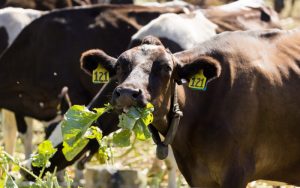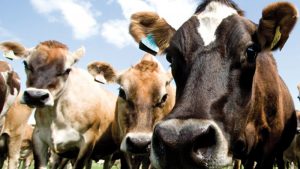
THERE’S an overwhelming sense of familiarity for Diarmaid Mac Colgain when he observes the debate in New Zealand about how farmers can produce food more sustainably.
The language in the discussions between farmers, sector groups and the government is the same as that used in Colgain’s home country of Ireland.
Colgain is the founder of Concept Dairy, an app that allows farmers to lock in their milk price for up to two years. He was part of a 16-company Irish delegation at this year’s Fieldays at Mystery Creek.
Ireland and NZ are both huge dairy exporters, exposed to international market prices.
For Ireland that market is the European Union and for NZ it is largely China and the rest of Asia.
Both exporters operate in an environment where milk prices are extremely high, but so too are the costs associated with producing that milk, he said.
“We are pushing sustainability on farmers in a high-price environment. But if it rolls back, and you look at a $5 milk price in New Zealand, will farmers adopt to make all of these changes and how much is that going to cost?”
Colgain questioned whether the push to be more sustainable will result in sustainable farmers subsidising other countries.
“If you’re in a shop in Nigeria and there’s Indian, South African or whatever and it’s unsustainable milk powder versus Irish, English and New Zealand milk powder – what are they going to pick? The cheapest.”
The industry has to look at the customer in the end, he said.
He wondered if Fonterra’s decision to partner with Nestlé for a zero-carbon farm may have been a result of pressure from Nestlé shareholders.
“At what point do you get the balance right between being sustainable and losing money? When you talk about sustainability, there’s economic sustainability and there’s social sustainability. We’re always focused on environmental as that’s the easiest one to look at, but how can farmers go green if they are in the red? They’re just going to quit.”
He pointed to the United Kingdom, where about three dairy farmers are quitting every day and more and more pressure is being put on farmers to be sustainable, but they were not being supported in terms of the price being paid for the product they produce.
The market is going to have to respond with a higher milk price otherwise it will get worse because with Britain leaving the EU, it lost that farmer payment, he said.
He said he is also conscious this is occurring at a time when living costs and food prices are climbing globally. Either the farmer or the consumer is going to have to pay for it.
“If they want a sustainable product, there is a cost associated with it.”
The changes in the primary sector are not going unnoticed by the EU’s ambassador to NZ, Nina Obermaier, who was at Fieldays for the first time.
Farmers in both Europe and in NZ are facing changes in the regulatory space while at the same time EU countries face a cost-of-living crisis and the ongoing effects on the Ukraine war.
That cost-of-living crisis has not dampened the call for more sustainable products, she said. In terms of the bloc’s common agricultural policy, “support for farmers is very much geared towards achieving sustainability objectives”.
“From a consumer point of view, there is very high demand to know where the product that you’re eating or the food that you’re buying comes from and that it’s produced with as little environmental harm as possible.”
Obermaier said NZ’s primary sector needs to continue to work with the government, which wants to make these changes in a co-operative manner.
“Everybody understands that a lot has been asked of them but everybody has to give their contribution to climate change,” she said.
Obermaier does not see NZ’s emissions pricing legislation as something that farmers in the EU’s member countries can copy because the emissions profiles of these countries is different.
Agricultural emissions make up about 10% of total emissions. EU farmers realise they will have to reduce their emissions too, but emissions pricing is focused on sectors that are larger emitters, Obermaier said.




